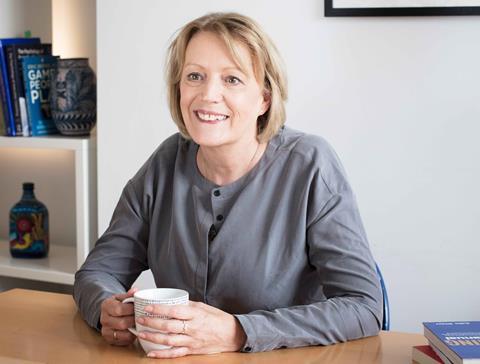We know that trust helps builds relationships and strong teams, but how do we foster this special ‘glue’ that binds us, asks Louise Rodgers

My coaching colleague Rachel Birchmore and I, together with writer and editor Emma Keyte, recently hosted an event at the new Shoreditch Arts Club (thank you again, Buckley Gray Yeoman), as part of the London Festival of Architecture. We took the LFA theme, ‘in common’ and played with the concept of ‘glue’.
During the evening, we, and guest contributors, explored the theme of human connection; what is the glue that brings us together? What keeps us together? How do we nourish the glue during sticky times, and repair things if the glue gets stretched, and how do we stop things falling apart?
It was a rich, varied, and at times very moving discussion which threw up much food for thought including food itself, and the benefits to relationships of preparing and eating it together.
Some things were very business or practice orientated; the importance of a shared sense of purpose; a common vision; a collaborative approach to working together. Others less tangible, more to do with how we need to ‘be’ when we work with or lead others. Words such as vulnerable, open, and honest all featured. And trust was mentioned more than once.
This made me think how often we all hear ‘trust’ described as a central component of any successful project team. We know that a high level of trust creates a more positive experience of working with others and leads to a workplace where people feel safe and respected, but we seldom get taught how to build that trust, or why explicitly it is important to do so.
…if you don’t build the competency of your team, you set them up to fail, and trust breaks down
Coincidentally the neurotransmitter, or chemical messenger, we produce when we trust someone and we are trusted in return, is oxytocin; the same brain chemical that is associated with social and sexual bonding. As well as the relationship ‘glue’ oxytocin provides, it reduces stress levels and boosts security and contentment. It contributes to making work meaningful.
Studies have shown that oxytocin is graded; the more trust one is shown by others, the more oxytocin is released in the brain. It’s a small leap from here to see that high levels of oxytocin within teams and project groups will cause people to work harder and help the group achieve its goals. Oxytocin contributes to making work meaningful.
So far, so good. But how do we build trust, and boost those important oxytocin levels?
There are several models of trust in leadership thinking and when I was doing some research for this column, I discovered that most of them say basically the same thing, using different words. So, I am going to go with 4C’s but have adapted these to more closely fit the context of the coaching work with which I am familiar, connection; collaboration; competency and consistency.
- Connection – during the pandemic many of us devised new ways of staying connected with our colleagues and people we care about, and keeping connected remains an essential behaviour of good leaders. As a pillar of leadership, connection builds trust by reassuring people that you care about them and what is going on in the rest of their lives, what I sometimes describe as their ‘hinterland’. It also boosts the ability to lead with empathy, compassion and understanding.
- Collaboration – recognising the importance of the team effort rather than grandstanding your own contribution reinforces trust. Remember the oxytocin that is generated by the sense of a shared endeavour and cultivate it in the people you work with by making sure they feel they are part of something bigger.
- Competency – part of a leader’s role is to build competence. If they neglect this responsibility and the team lacks competence, the leader’s behaviour will respond to this and, rather than focus on building the competence of the team, they will show a lack of trust perhaps by insisting on micro-managing everything they ask others to do. This works both ways. When a leader promises something, people need to believe that they will deliver on that promise.
- Consistency – my final ‘C’ is that the above must all be done with consistency. If you strive for connection sometimes, but let it go by the wayside when you are stretched and short on time, then all your good intentions will be for nothing. If you neglect collaboration, people may fall into what I would call a transactional mindset; their internal motivation gets switched off. And if you don’t build the competency of your team, you set them up to fail, and trust breaks down.
Those are my 4Cs of trust and they apply equally to leaders, project team members and organisational behaviours. How can you intentionally apply a little more trust – or oxytocin glue – where it is most needed today?
Postscript
Louise Rodgers is Building Design’s professional coach. A personal and business coach, she co-created and co-delivers, with Rachel Birchmore, Step Up, a leadership development programme for built environment consultants.
Do you have a question for Louise? If so email louise@eidyia.co.uk. She will use the most interesting in her columns but cannot enter into individual correspondence.
Hear more from Louise and Rachel on their podcast, Coaches on the Couch.
















No comments yet